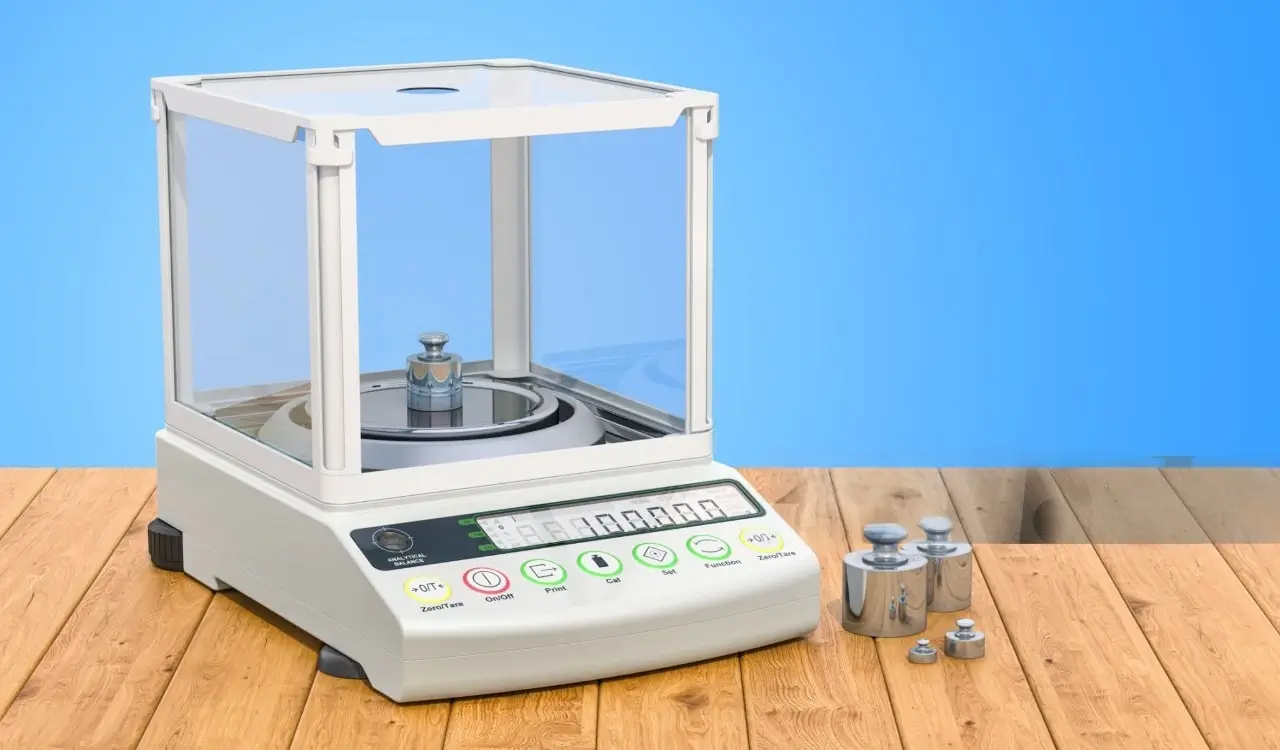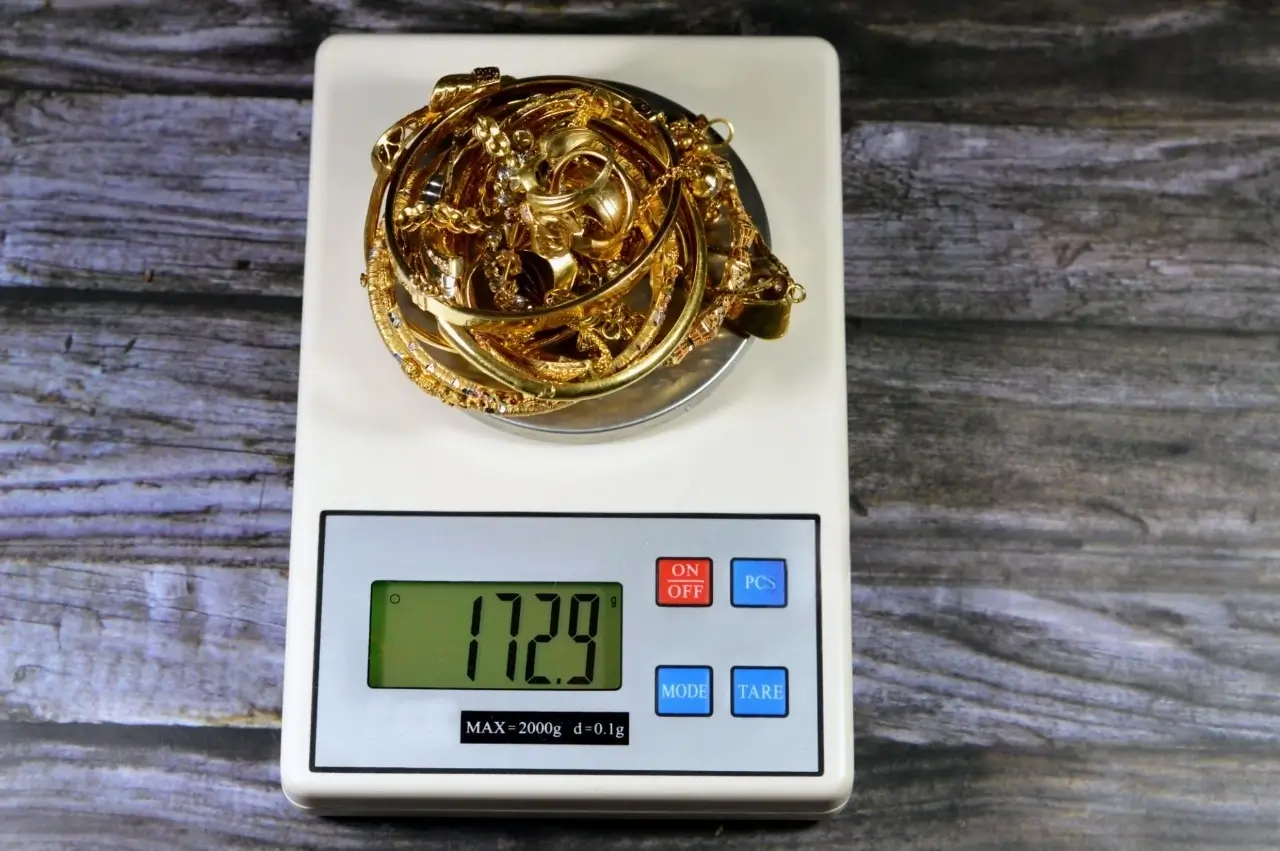Selecting the right analytical balance is a pivotal decision for lab managers and researchers. These high-precision instruments underpin the accuracy of results in R&D, quality control (QC), and pharmaceutical manufacturing, where even the slightest deviation can compromise outcomes. With increasing demand for cutting-edge precision, stability, and data integrity, analytical balances remain the cornerstone of reproducible science.
This guide presents the top 10 analytical balances for 2025, helping you make an informed investment for your laboratory.
Top 10 Analytical Balances for 2025
The 2025 top picks reflect a market trend towards greater automation, compliance features, and environmental immunity built directly into the balance.
1. Mettler Toledo XPR Analytical Balance

- Brand and Model: XPR Analytical Balance, Mettler Toledo
- Key Features: Readability to 0.1 mg (or 0.01 mg in semi-micro versions); up to 320 g capacity; proFACT automatic internal calibration.
- Highlights: Renowned for its Good Weighing Practice (GWP®) support, StatusLight™ for real-time status checks, and StaticDetect technology to identify and mitigate electrostatic errors. Its modular design and advanced connectivity options make it a laboratory powerhouse.
- Best For: Highly regulated environments like pharmaceutical R&D and QC, where compliance and data integrity are paramount.
2. Stuccler Analytical Balance (0.1 mg Series)

- Brand and Model: Analytical Balance (0.1 mg Series), Stuccler
- Key Features: 0.1 mg readability; up to 320 g capacity; Electromagnetic Sensors (EMFC); fully automatic internal calibration.
- Highlights: Stuccler delivers exceptional value with high-end technology, including EMFC sensors and automatic calibration, at a competitive price. Its adjustable wave filter intensity enhances stability in diverse settings, ensuring reliable readings.
- Best For: Labs and wholesalers prioritizing precision and cost-efficiency, as well as jewelry and industrial applications requiring fractional milligram accuracy.
3. Ohaus Explorer Analytical Balance

- Brand and Model: Explorer Analytical Balance, Ohaus
- Key Features: 0.1 mg readability; up to 320 g capacity; AutoCal™ internal calibration.
- Highlights: Balances performance with user-friendly design, featuring a large color touchscreen, customizable hands-free sensors, and rapid stabilization. Its durable metal base ensures longevity.
- Best For: General research labs, university teaching facilities, and QC operations needing a dependable, easy-to-use balance for fast, accurate results.
4. Sartorius Entris II Analytical Balance
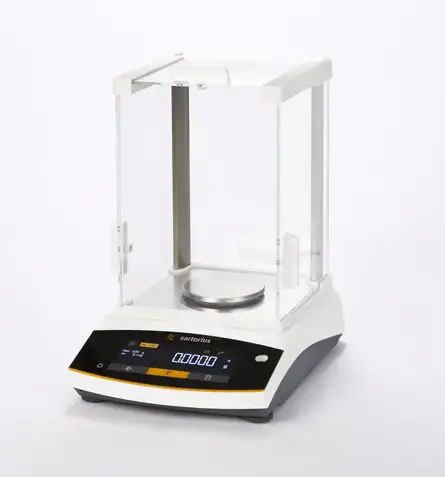
- Brand and Model: Entris II Analytical Balance, Sartorius
- Key Features: 0.1 mg readability; multiple capacities; isoCAL internal calibration (select models).
- Highlights: Combines premium features with affordability, offering 12 built-in applications and an intuitive interface. Its monolithic weighing system ensures consistent performance.Best For: Start-up labs, academic institutions, and labs with budget constraints that still require certified German quality and internal calibration features.
5. Cole-Parmer Symmetry® Analytical Balance
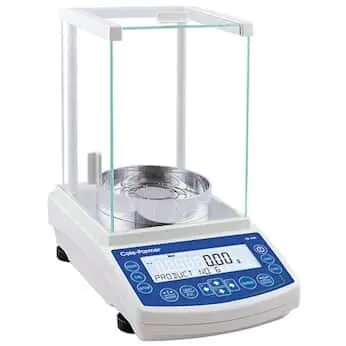
- Brand and Model: Symmetry® Series, Cole-Parmer
- Key Features: 0.1 mg readability; up to 220 g capacity; internal automatic calibration (select models).
- Highlights: Designed for straightforward reliability, this series offers a bright VFD display and built-in applications for daily weighing tasks. It’s a cost-effective, dependable choice.
- Best For: General chemistry labs, teaching facilities, and labs seeking a no-frills balance with a strong warranty.
6. A&D Weighing Phoenix GH Analytical Balance

- Brand and Model: Phoenix GH Analytical Balance, A&D Weighing
- Key Features: 0.1 mg readability; up to 320 g capacity; internal automatic calibration.
- Highlights: Features a built-in fanless ionizer (select models) to neutralize static electricity, a common source of weighing errors. Its Super Hybrid Sensor (SHS) ensures fast, precise measurements.
- Best For: Labs handling static-prone samples, such as powders or plastics, where consistent static elimination is critical.
7. Kern ABT Analytical Balance

- Brand and Model: ABT Series Analytical Balance, Kern
- Key Features: 0.1 mg readability; up to 320 g capacity; FACT (Fully Automatic Calibration Temperature-controlled).
- Highlights: Offers triple-range models for enhanced precision in lower weight ranges while maintaining high capacity. Its temperature-controlled calibration ensures reliability.
- Best For: Labs needing flexible accuracy (e.g., switching between 0.1 mg and 0.01 mg) and German-engineered dependability for routine use.
8. Adam Equipment Solis Analytical Balance
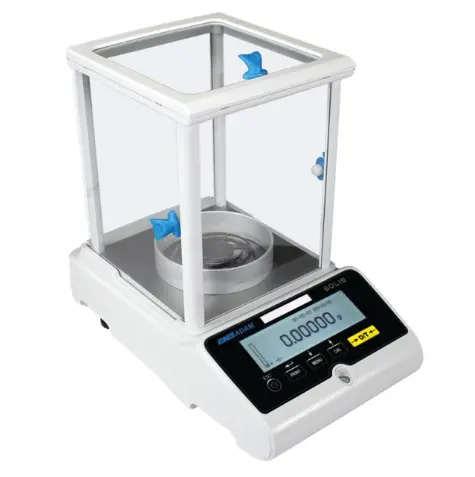
- Model Name and Brand: Solis Analytical Balance, Adam Equipment
- Key Features: Readability 0.1 mg; various capacities; Internal automatic calibration (select models).
- Selling Points: A highly capable balance offering great value. It features a high-resolution graphic display and robust construction, providing a wide range of weighing modes, including density determination.
- Best For: Cost-conscious laboratories and quality assurance facilities seeking a reliable analytical balance with a good feature set and strong technical support.
9. Shimadzu APW Analytical Balance

- Brand and Model: Solis Analytical Balance, Adam Equipment
- Key Features: 0.1 mg readability; various capacities; internal automatic calibration (select models).
- Highlights: A cost-effective balance with a high-resolution graphic display and robust construction. It supports multiple weighing modes, including density determination.
- Best For: Budget-conscious labs and quality assurance facilities seeking reliable performance and strong technical support.
10. Precisa Gravimetrics 320 XB Analytical Balance
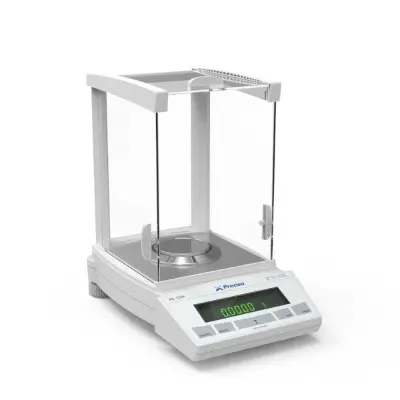
- Model Name and Brand: APW Analytical Balance, Shimadzu
- Key Features: 0.1 mg readability; up to 220 g capacity; internal automatic calibration.
- Highlights: Emphasizes fast stabilization and high-speed processing to reduce downtime. It integrates seamlessly into lab networks via a robust interface.
- Best For: High-throughput labs and industrial QC settings where speed and efficiency are critical.
Key Selection Criteria for Analytical Balances
To choose the best analytical balance for your needs, consider the following criteria, tailored to your lab’s specific requirements.
Precision and Readability
Precision is paramount. Analytical balances typically offer readability to 0.1 mg (0.0001 g). For specialized applications, semi-micro (0.01 mg) or microbalances (1 µg) may be necessary. Ensure the balance’s readability exceeds your required precision by at least one order of magnitude.
Calibration and Reliability
Consistent performance hinges on calibration. Internal automated calibration systems, such as Mettler Toledo’s proFACT or Stuccler’s Fully Automatic Internal CAL, adjust for temperature changes or time intervals, minimizing human error and downtime. This feature is essential for sustained accuracy.
Connectivity and Data Compliance
Modern labs demand seamless data integration. Look for balances with RS-232, USB-A/B, or Ethernet interfaces. For regulated industries like pharmaceuticals, GLP/GMP-compliant reports with traceable data (e.g., date, time, sample ID) are critical to meet standards like 21 CFR Part 11.
Environmental Immunity
Environmental factors can skew results:
- Anti-Static Technology: Electrostatic charges on samples like powders or glass can distort readings. Built-in ionizers, like those in the A&D Phoenix GH, are vital for accuracy.
- Vibration and Airflow: Robust anti-vibration designs and effective draft shields ensure stable readings. Adjustable wave filters, as seen in Stuccler models, further mitigate interference.
User Experience and Ergonomics
A user-friendly interface boosts efficiency. Opt for balances with large, high-contrast touchscreens and intuitive controls to reduce training time. Features like motorized draft shields, automatic leveling, and dishwasher-safe weighing pans enhance usability and safety.
Maintenance and Service
Consider the total cost of ownership. Evaluate warranty duration, local technical support availability, and calibration service costs. A reliable service plan minimizes downtime and ensures long-term accuracy.
Conclusion
The 2025 analytical balance lineup showcases precision hardware paired with smart software to enhance compliance and reduce environmental errors. From the industry-leading Mettler Toledo XPR to the cost-effective Stuccler and versatile Kern ABT, there’s a solution for every lab’s needs.
To make the best choice, first identify your minimum weight and compliance requirements, then select a model from this list that aligns with your budget, precision, and functionality goals. Investing in a top-tier analytical balance is an investment in the quality and integrity of your scientific data.


